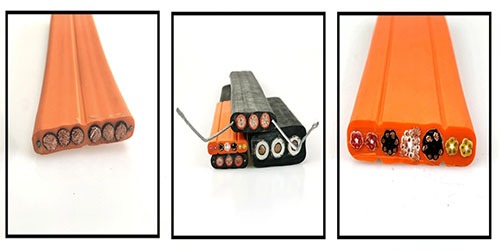Innovations in Flexible Cable Technology You Should Know
In an age where technology is constantly evolving, the importance of flexible cables cannot be overstated. These cables are essential in powering and connecting modern devices, from smartphones to industrial machinery. Innovations in flexible cable technology are paving the way for enhanced performance, durability, and versatility. Here’s a look at some of the most exciting advancements you should know about.
9/25/20242 min read


1. Advanced Materials
Recent advancements in materials science have led to the development of flexible cables made from new polymers and alloys. These materials not only enhance the flexibility and strength of the cables but also improve their resistance to environmental factors such as heat, moisture, and chemicals. Innovations like fluoropolymers and thermoplastic elastomers are increasingly used, offering superior performance in extreme conditions.
2. Increased Conductivity
One of the primary challenges in flexible cable design has been maintaining signal integrity while ensuring flexibility. Recent innovations have focused on improving the conductivity of flexible cables. Manufacturers are now using multi-stranded copper wires that enhance electrical performance without sacrificing flexibility. This improvement is crucial for applications requiring high-speed data transmission, such as telecommunications and data centers.
3. Lightweight Designs
As technology becomes more portable, the need for lightweight components is more significant than ever. Innovations in flexible cable design have led to thinner, lighter cables without compromising strength or performance. These lightweight flexible cables are easier to install and manage, making them ideal for applications in consumer electronics, automotive, and aerospace industries.
4. Enhanced Durability
Flexible cables are now designed with greater durability in mind. Advances in insulation technology have resulted in cables that can withstand more bending cycles, reducing the risk of fatigue and failure. Some cables are now engineered with protective layers that enhance resistance to abrasion, chemicals, and UV radiation, making them suitable for outdoor and harsh industrial environments.
5. Smart Cable Technology
The advent of the Internet of Things (IoT) has led to the development of smart flexible cables. These cables can integrate sensors that monitor various parameters such as temperature, humidity, and electrical load. This real-time data collection enables proactive maintenance and alerts users to potential issues before they lead to failures. Smart flexible cables are especially valuable in critical applications like medical devices and industrial automation.
6. Eco-Friendly Innovations
Sustainability is becoming increasingly important in technology. Manufacturers are now focusing on producing flexible cables that are environmentally friendly. This includes using recyclable materials and reducing the carbon footprint during production. Eco-friendly flexible cables are not only beneficial for the environment but also appeal to environmentally-conscious consumers and businesses.
Conclusion
The innovations in flexible cable technology are transforming industries and enhancing the performance of devices across the board. With advancements in materials, conductivity, durability, and sustainability, flexible cables are more essential than ever. Staying updated on these innovations will help businesses and consumers make informed decisions, ensuring they choose the best solutions for their needs.
